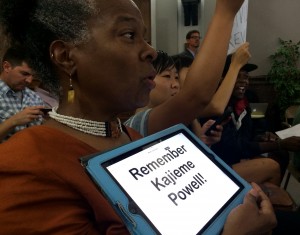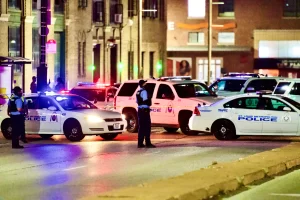
On Wednesday, SLPD Chief Sam Dotson appeared before the Public Safety Committee at City Hall. The packed hearing room was a reflection of citizen concerns about the department’s use of deadly force. Protest signs in the room made it crystal clear that we wanted answers to the execution of Kajieme Powell by St. Louis cops on August 19. Powell was a young, black man with known mental health issues. Because this police murder happened in the turbulent aftermath of the execution of black teen Mike Brown by Ferguson cops, police authorities are happy to see that Kajieme’s murder is not getting the attention it should. Protest signs in the hearing room made it clear that we want answers, we want accountability, we want justice.
I have refused to look at the video tape of Kajieme’s murder captured on a bystander’s cell phone. Like the recent beheadings by ISIS, I am not interesting in having these gory and ghastly images seared in my consciousness. I inadvertently heard the audio of Eric Garner being choked to death by NYC cops. The muffled gasps of Garner begging for his last breaths of air still haunts me.
Elizabeth Vega and her Healing Arts team took this potential trauma to viewers into consideration when they created a video about Kajieme. It was played during the Public Safety Hearing in City Hall Rotunda and captured the interest–and disgust–of citizens who paused to watch this powerful video. Watch it here.
The fight for police accountability is ongoing. The fight against police terror goes beyond victims like Carey Ball, Kajieme, Mike Brown and many others. If communities don’t organize to stop the unbridled and roguish behavior of police that results in harassment, assaults and murder, then their deaths cannot be vindicated.



